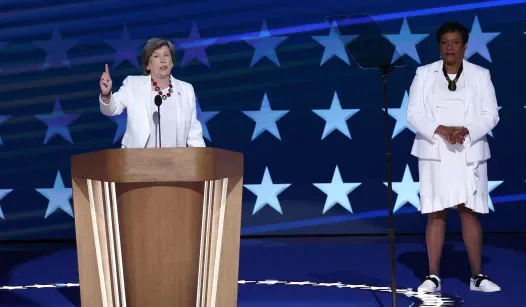In the ever-evolving landscape of American politics, certain themes seem to resonate repeatedly, much like the catchy refrains of popular songs that never quite fade away. One such theme is the persistent influence of teachers’ unions in educational policy debates across the United States. As the nation grapples with pressing issues like funding, curriculum standards, and educational equity, the role of these unions remains a focal point of contention and conversation.
Teachers’ unions, representing the interests of educators, have historically played a crucial role in advocating for better working conditions, salaries, and resources for public schools. Their influence extends beyond mere negotiations; they shape educational policy and public perception around teaching and learning. However, as political landscapes shift and new challenges emerge, the strategies and messages of these unions often feel like a remix of past campaigns.
In recent years, the conversation surrounding teachers’ unions has intensified, particularly in the wake of the COVID-19 pandemic. The rapid transition to remote learning exposed significant disparities in educational access and quality, prompting unions to advocate for increased funding and support for both teachers and students. Yet, this advocacy has also sparked debates about the unions’ priorities, especially when it comes to issues like school reopenings and curriculum changes.
One of the most significant challenges facing teachers’ unions today is the growing push for school choice, including charter schools and voucher programs. Proponents argue that these alternatives provide families with more options and foster competition, potentially leading to improved educational outcomes. Critics, including many teachers’ unions, contend that such measures divert essential funding away from public schools and undermine the collective bargaining power of educators.
As unions navigate these complex dynamics, their messaging often echoes familiar themes of equity and access. They emphasize the need for adequate resources, smaller class sizes, and comprehensive support systems for both students and teachers. However, the effectiveness of these messages can vary depending on the political climate and the specific issues at hand.
The 2022 midterm elections served as a critical juncture for teachers’ unions, as they mobilized to support candidates who aligned with their goals. Many unions endorsed Democratic candidates who championed public education funding and opposed the expansion of school choice. This strategic alignment reflects a broader trend in which unions seek to leverage their political power to influence legislative outcomes and protect the interests of their members.
Despite their efforts, teachers’ unions face significant opposition from various political and ideological factions. Critics often portray unions as obstacles to educational reform, arguing that they prioritize the interests of their members over the needs of students. This narrative has gained traction in some circles, complicating the unions’ efforts to advocate for meaningful change.
In response, many teachers’ unions have begun to adapt their strategies, focusing on building coalitions with parents, community organizations, and other stakeholders. By framing their advocacy in terms of shared goals—such as improving educational equity and ensuring that every child has access to quality education—unions aim to broaden their appeal and counteract negative perceptions.
Moreover, the rise of social media and digital organizing has transformed the way unions communicate and mobilize their members. Platforms like Twitter, Facebook, and Instagram allow unions to disseminate information quickly and engage with a wider audience. This shift has enabled unions to amplify their messages and rally support for key initiatives, from funding campaigns to grassroots movements advocating for educational reform.
As we look ahead, the future of teachers’ unions in American politics remains uncertain. The challenges they face are formidable, but their ability to adapt and evolve will be crucial in navigating an increasingly complex educational landscape. Whether through traditional advocacy or innovative approaches to coalition-building, teachers’ unions will continue to play a vital role in shaping the future of education in the United States.
In conclusion, the narrative surrounding teachers’ unions is not merely a repetition of old themes but rather a reflection of the ongoing struggles and triumphs within the education system. As they confront new challenges and adapt to changing political realities, these unions will undoubtedly continue to influence the conversation around education policy in the United States. In a world where the political landscape is ever-changing, the familiar tune of teachers’ unions serves as a reminder of the enduring importance of advocating for quality education and the rights of educators.
